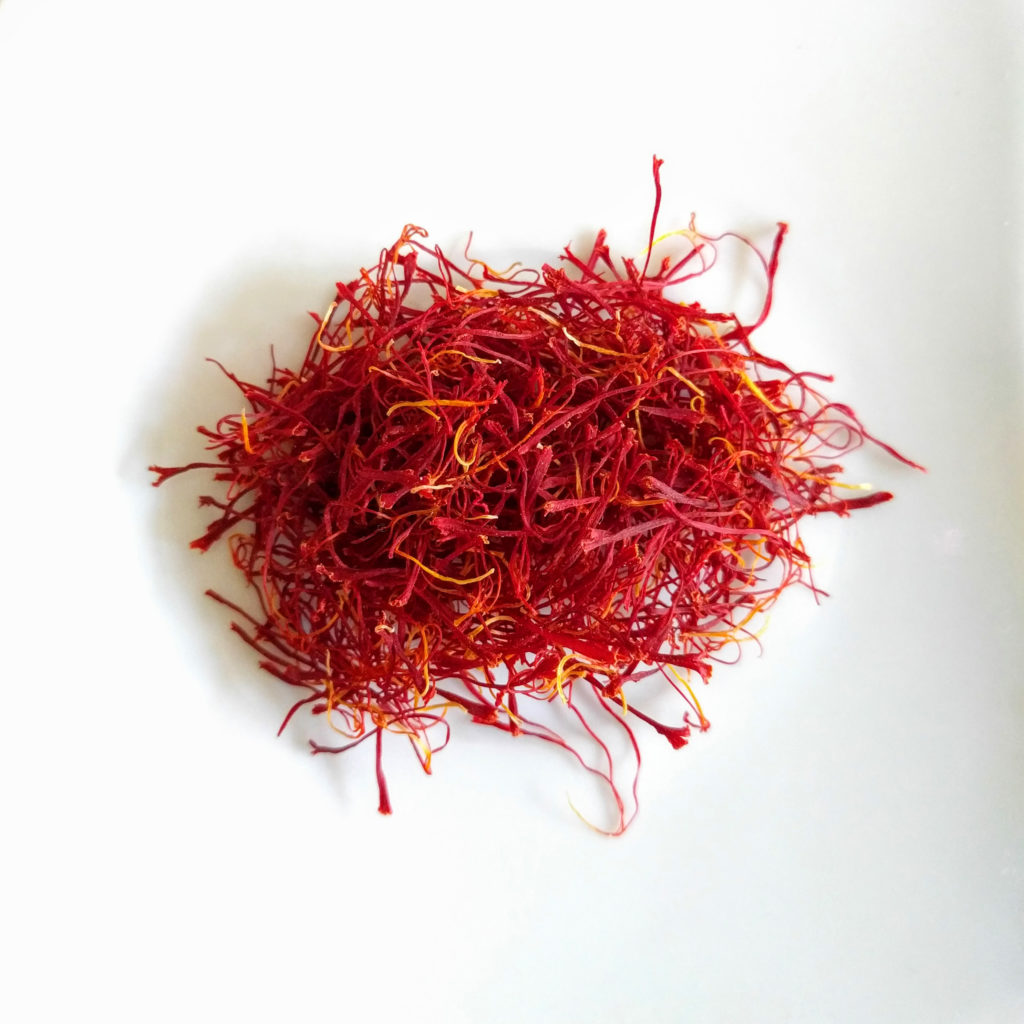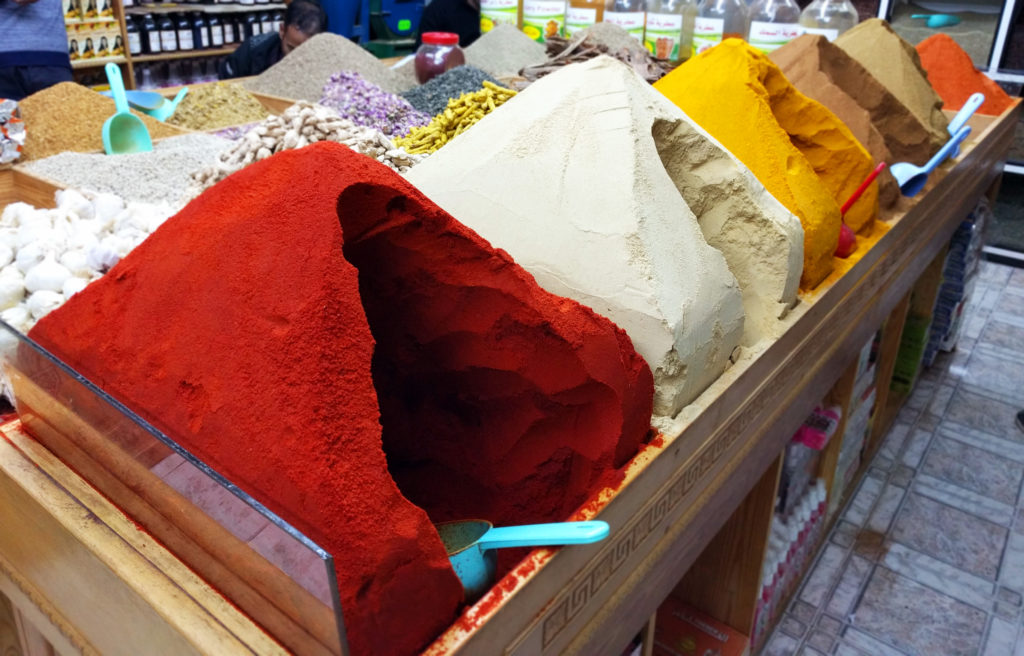Morocco is known for their abundance of spices, particularly saffron. Unfortunately, saffron is one of the most expensive spices in the world because of the enormous amounts of labor involved. (The purple saffron crocus harvest lasts only 1-2 weeks in the fall, and it requires 150 flowers to yield 1 gram of saffron threads.) I wanted to see if I could score a deal on saffron (compared to prices in the US), but of course, saffron is also one of the most widely faked spices on the market, so the challenge was on.
There’s lots of information online about how to distinguish real from fake saffron, but having worked with the real thing (and bought the fake version in a sealed container in Turkey), I was confident that my nose would not lead me astray. Real saffron has an intense and distinctive odor; if you can smell the product, it should be pretty easy to tell what you’re buying. If you stick your nose in the jar and don’t smell much of anything, you’re likely being sold safflower, which looks similar but has none of the flavor of saffron. Of course, this does not help first-time saffron buyers or anyone who doesn’t remember what it should smell like. If that’s the case, look for red threads with small bits of yellow on one end and a trumpet-like flare on the other end.

